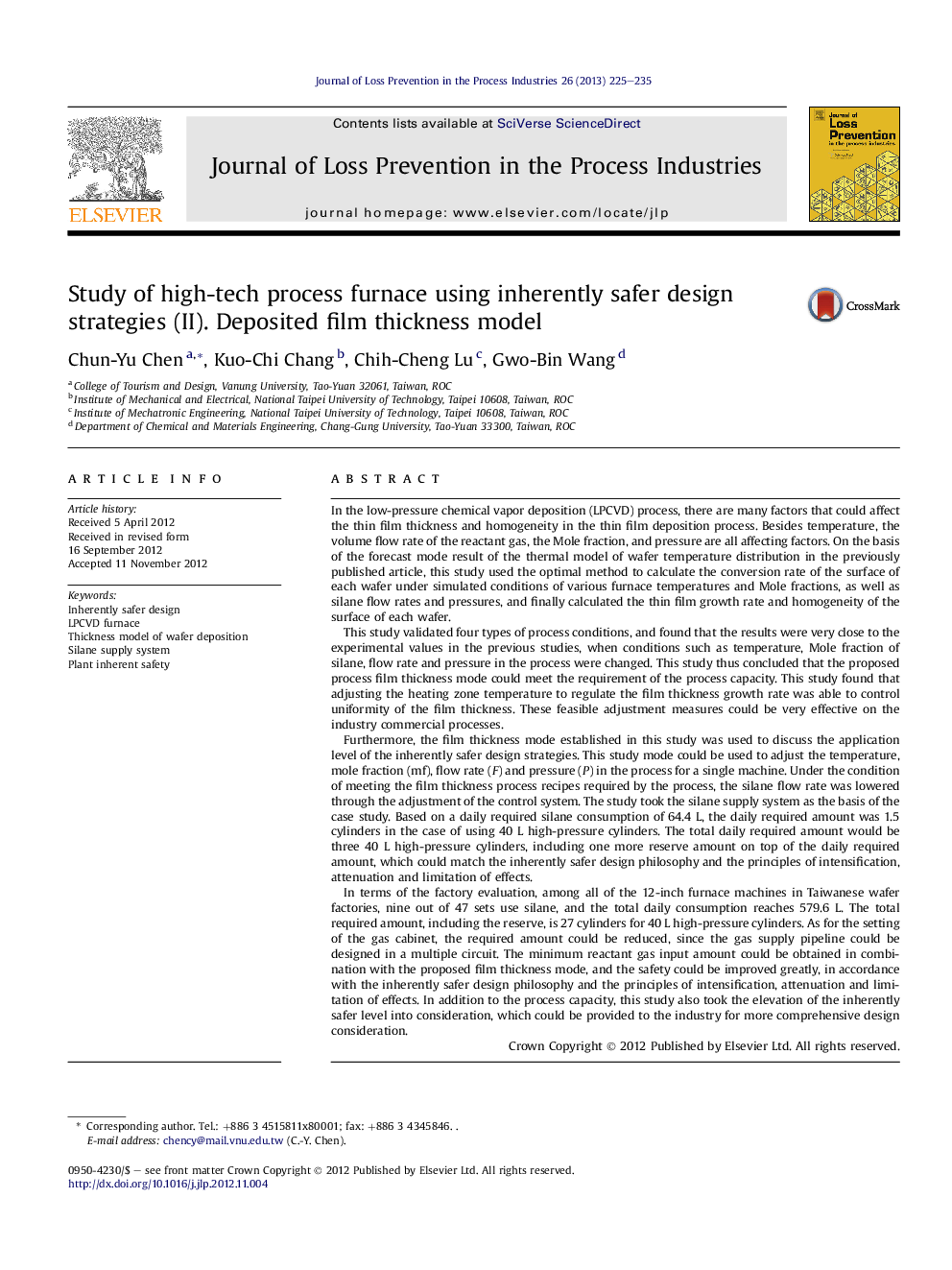| کد مقاله | کد نشریه | سال انتشار | مقاله انگلیسی | نسخه تمام متن |
|---|---|---|---|---|
| 586967 | 878243 | 2013 | 11 صفحه PDF | دانلود رایگان |

In the low-pressure chemical vapor deposition (LPCVD) process, there are many factors that could affect the thin film thickness and homogeneity in the thin film deposition process. Besides temperature, the volume flow rate of the reactant gas, the Mole fraction, and pressure are all affecting factors. On the basis of the forecast mode result of the thermal model of wafer temperature distribution in the previously published article, this study used the optimal method to calculate the conversion rate of the surface of each wafer under simulated conditions of various furnace temperatures and Mole fractions, as well as silane flow rates and pressures, and finally calculated the thin film growth rate and homogeneity of the surface of each wafer.This study validated four types of process conditions, and found that the results were very close to the experimental values in the previous studies, when conditions such as temperature, Mole fraction of silane, flow rate and pressure in the process were changed. This study thus concluded that the proposed process film thickness mode could meet the requirement of the process capacity. This study found that adjusting the heating zone temperature to regulate the film thickness growth rate was able to control uniformity of the film thickness. These feasible adjustment measures could be very effective on the industry commercial processes.Furthermore, the film thickness mode established in this study was used to discuss the application level of the inherently safer design strategies. This study mode could be used to adjust the temperature, mole fraction (mf), flow rate (F) and pressure (P) in the process for a single machine. Under the condition of meeting the film thickness process recipes required by the process, the silane flow rate was lowered through the adjustment of the control system. The study took the silane supply system as the basis of the case study. Based on a daily required silane consumption of 64.4 L, the daily required amount was 1.5 cylinders in the case of using 40 L high-pressure cylinders. The total daily required amount would be three 40 L high-pressure cylinders, including one more reserve amount on top of the daily required amount, which could match the inherently safer design philosophy and the principles of intensification, attenuation and limitation of effects.In terms of the factory evaluation, among all of the 12-inch furnace machines in Taiwanese wafer factories, nine out of 47 sets use silane, and the total daily consumption reaches 579.6 L. The total required amount, including the reserve, is 27 cylinders for 40 L high-pressure cylinders. As for the setting of the gas cabinet, the required amount could be reduced, since the gas supply pipeline could be designed in a multiple circuit. The minimum reactant gas input amount could be obtained in combination with the proposed film thickness mode, and the safety could be improved greatly, in accordance with the inherently safer design philosophy and the principles of intensification, attenuation and limitation of effects. In addition to the process capacity, this study also took the elevation of the inherently safer level into consideration, which could be provided to the industry for more comprehensive design consideration.
► Using existing model of LPCVD furnace to develop a simulation program.
► Proposed model of this study applied to adjust & control for process conditions.
► Proposed model of Silane gas supply can be controlled and reduced storage cylinder.
► Experimental results proved that proposed model has realized ISD strategies.
► Proposed ISD strategies application structure diagram for high-tech park and plant.
Journal: Journal of Loss Prevention in the Process Industries - Volume 26, Issue 1, January 2013, Pages 225–235